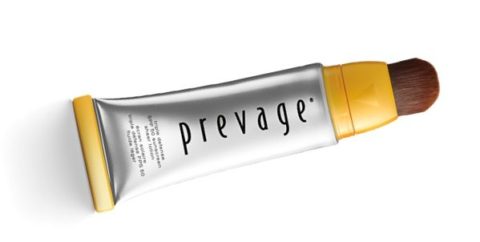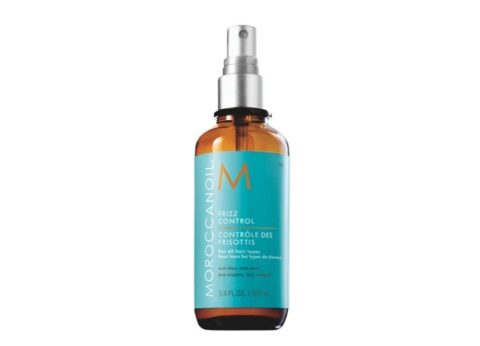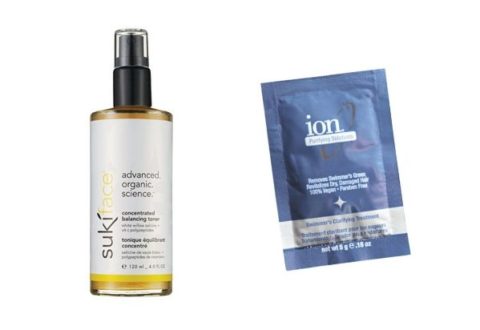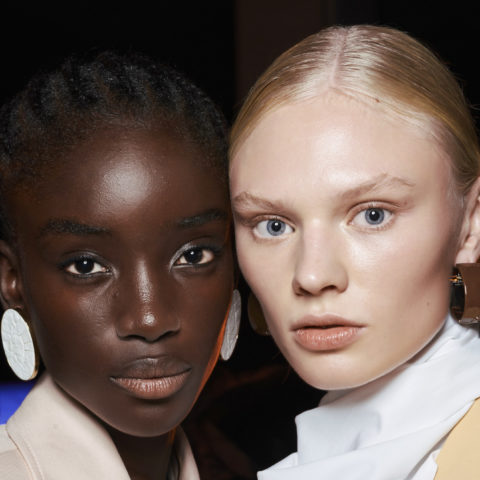Beauty Fix: Vacation time! Keep dyed hair safe in chlorine, what to pack for the cottage and how to look flawless after a long plane ride


The best part about summer? That it’s also the season of vacations! While we’re not lucky enough to do like the Europeans do and take an entire month off work, most of us will split town for at least one weekend. Whether you’re going to the cottage, have a far-away holiday booked or opt for a last-minute road trip, one question remains the same: What to pack? This week, Beauty Fix is here to help—after all, we want you to look your best when you’re stepping off the plane, coming out of the pool and cooling off after a long (protected!) day in the sun.
In need of a beauty fix? Email us at [email protected].

I’ve heard the water is very hard at the locale I’m travelling to this summer—should I switch up the type of products I bring with me because of this?
Hard water is the cumulative build-up of minerals like magnesium, calcium and iron on your skin and in your hair — they’re also referred to as “free-radicals.” Sufferers of dry skin, even those with dermatitis, could blame living in a household without a water softener—it’s that simple! When these minerals enter or exist within your water stream, they make it nearly impossible for anything solvent (like soap, shampoo, or moisturizer) to permeate your pores. Ways to avoid the worst-case scenario—split ends, flaky skin—while you’re on your vacation include taking shorter showers with less soap, and using store-bought water to wash your face. The ultimate defense against hard water and free-radicals are antioxidants; the stronger the better. Elizabeth Arden Prevage products are formulated with an ingredient called Idebenone, which is also referred to as a “super antioxidant.” Prevage Triple Defense SPF 50 Sunscreen Sheer Lotion ($95, at department stores) has a broad-based sunscreen and should accompany you to the lake during the day. And if you’re heading to the ocean, you’ll be pleased to know it won’t just help with the hard water—it also blocks build-up from saltwater!

Whether I’m on a plane or a train, my hair always looks like a rat’s nest by the time I get to my destination. Any travel-friendly hairstyles that will stay put through my trip (and, of course, allow me to sleep en route)?
My former attempt at travel-friendly hair included a smoothing cream applied to wet hair pulled back in a ponytail. That method wasn’t ideal for two reasons: first, the plane’s air temperature was quite cool, and I was freezing by mid-flight. Secondly, my hair, gathered in an elastic, was uncomfortable for sleeping against my headrest. If your hair is long enough, tie it in a top-knot with a cute scarf and forget about it until you land. If you’d rather wear it down and more relaxed, keep a bottle of MoroccanOil Frizz Control ($32, at salons) in your purse. The pH balance in the cabin of a plane is extremely humid, which is why you often feel like your skin is drier upon landing. A visit to the loo, a splash of water, and a periodic spritz of this treatment will keep your hair smooth and make a rat’s nest unlikely.

I’m going to Miami in a few weeks and don’t want to wear much makeup during my vacation, but I do want to look pretty and pulled-together. Do you have any beach-friendly makeup tips?
My oh my, it’s going to be hot hot hot! I understand your need to adjust your beauty routine—even our relatively cool Canadian temperatures have an immediate and severe effect on my ability to go makeup-free. On vacation, I believe you’re better off forgetting foundation exists and putting your efforts into managing the tone of your skin. Sun and heat increase your body’s core temperature and the way your body reacts is by trying to cool again, by perspiring, sending oxygenated blood to the surface of your skin and dilating its pores. All three of these reactions help burn off the increased heat. While your body works (which it will the entire time you’re away) try to soothe the inflammation and scarlet tones with Suki Concentrated Balancing Toner ($33, freshfaced.ca), a spritz-on toner you can keep in your tote by the pool. Its key ingredients—rosewater, concentrated aloe vera, lavender, calendula, seaweed extract and premium distilled essential oil—will gently help balance your complexion’s pH so it isn’t red and swollen. Accompanied by a waterproof mascara and your favourite gloss, this kit should be all you need by the beach.
I love swimming but chlorine augments my hair dye and dries it out. Are there products that will help prevent and correct chemical damage?
Both pools and saltwater can easily degenerate the colour and structure of your hair, and there are plenty of solutions available online. One blogger recommended the same recipe my grandmother has sworn by her whole life: a blended mixture of one avocado, one egg, 2 tablespoons of olive oil, and a banana. If your pool deck is private enough, mix this up and apply it poolside to nourish beneath a towel for an hour or so. Shower off and you’ll have hair that’s well-fed with essential fats and nutrients. If your surrounding crowd won’t find avocado at the public pool appealing, you can substitute by tossing an Ion Swimmer’s Clarifying Treatment towelette ($3, sallybeauty.com) in your purse. It’s 100 per cent vegan—so just as environmentally cautious as the natural food mask—and designed to break down residue left on your hair from sun, chlorine, salt water and minerals. It also only takes seven minutes to restore your hair! So if you wanted to jump in for one more swim, you could totally afford the time to do it all over again.

Do I really need to apply my sunscreen after every dip in the lake, even if it’s waterproof?
Want to know how to calculate effectiveness of SPF? The acronym stands for “sun protection factor” and makes reference to how many minutes it will take you to get burned. This is based on the SPF degree (15, 30, 40, etc.) multiplied by how many minutes it usually takes you to get a burn. For the SPF number to tell you how often you should re-apply, you need to know how easily you get burned in a matter of minutes. For example: if you’re fair and burn within 10 minutes and were wearing a (very minimal) SPF 15, you would calculate 10 x 15, and then divide that answer by 60, for a final result of 2.5. Meaning: you would need to apply sunscreen every two-and-a-half hours for it to prevent burns, and decrease the risk of skin damage and cancer. The fact that you’re swimming only accelerates the need for re-application, especially if your bottle isn’t waterproof. The equation isn’t as reliable for SPF numbers above 30 though, so we’d recommend sticking to the lower numbers and applying more often. Try B. Kamins Sunbar ($40, ebeauty.ca) because it’s broad-spectrum and moisturizing, uses a natural chemical (titanium dioxide) to protect and is good to use on your face. You can also apply it over your makeup, which I think is the essential factor in wearing enough sunscreen or skipping out to save face.







